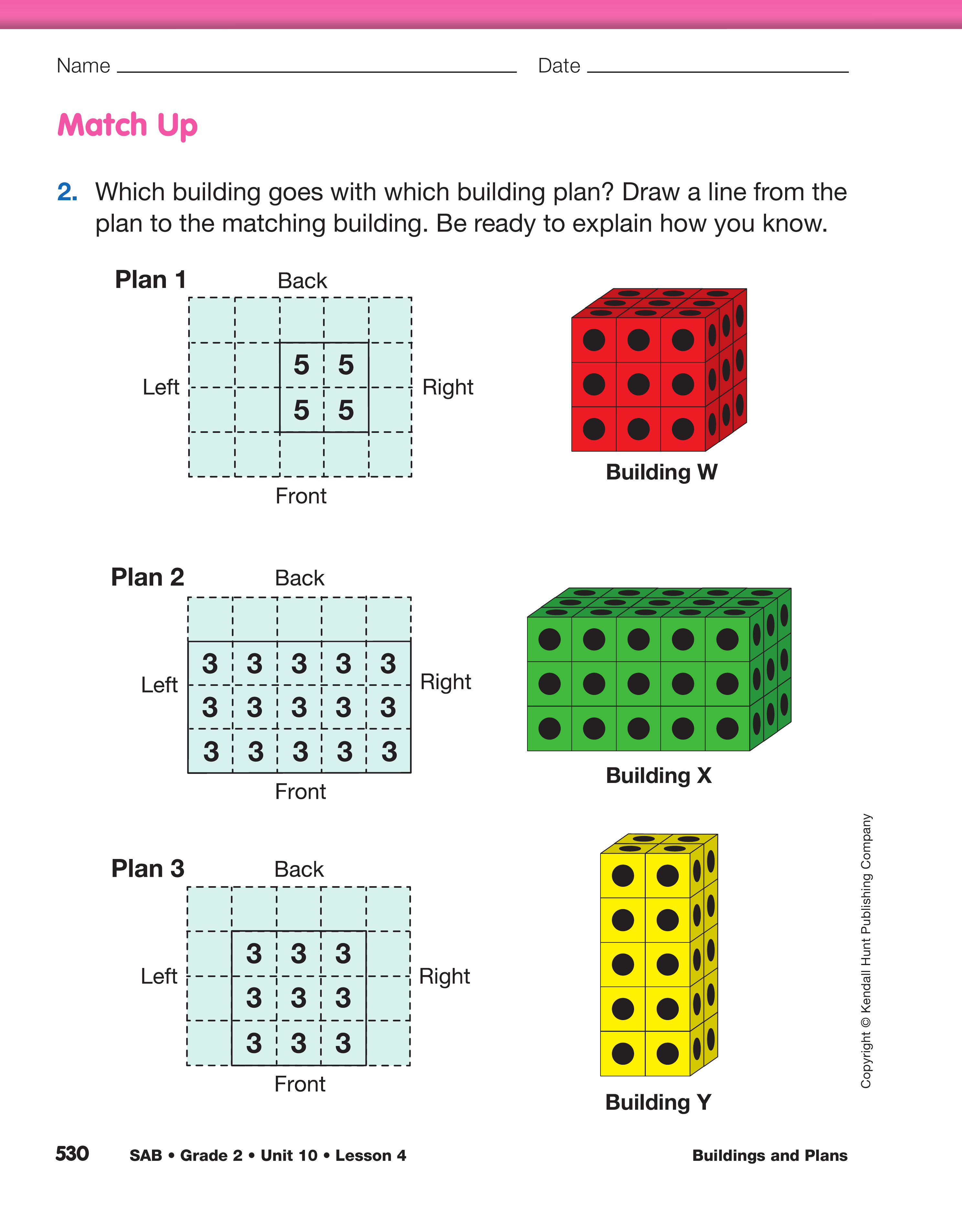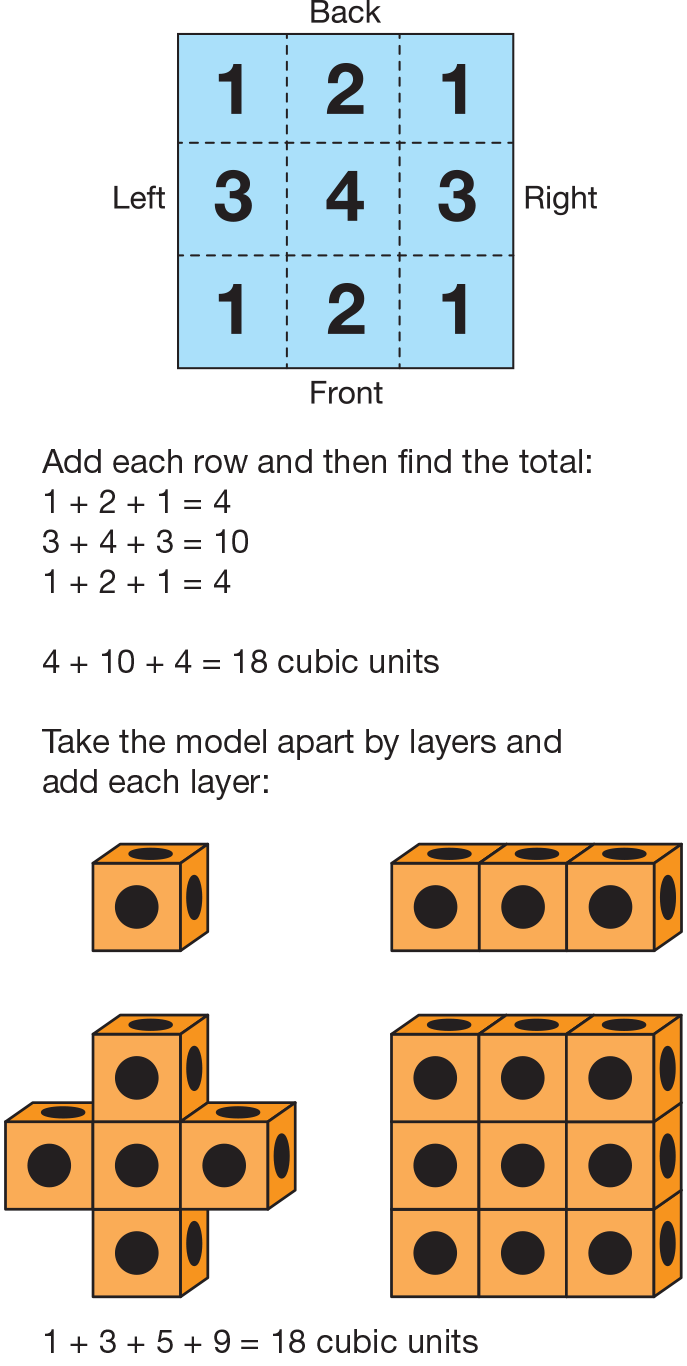Buildings and Plans
Est. Class Sessions: 2–3Developing the Lesson
Part 2: Matching Building Plans to Buildings and Pictures
Match Teacher's Models to Plans. Display the two buildings you constructed in preparation for the lesson. Display the building plans and ask students to determine which building plan goes with which building. See Materials Preparation and Figure 2. Give student pairs an opportunity to solve the problem on their own so that they can visualize (or take apart) the building in their own way. Ask questions similar to the following as needed. Then discuss them as a class.
Ask:
Match Students' Models to Plans. Ask student pairs to create a building of their own and record its plan on a copy of the Building Plan Two Ways Master. Remind students of the rules for constructing a building:
- All cubes must be connected.
- No balconies or arches are allowed.
Have them write their names underneath the building plan. These students should conceal their buildings from the class. Collect these concealed buildings and show them to the class. Display the building plans.
Ask students to match the buildings constructed by their classmates to the building plans displayed. Review some of the questions asked about the two buildings you constructed at the beginning of Part 2.
Other questions are:
Questions along these lines will help students examine their own thinking. Sharing ideas and explaining and examining reasoning aloud helps students understand why various strategies work, and how they compare with their own strategies.
Match City Buildings' Pictures to Plans. Ask student pairs to construct a building for each of the building plans in the Match Up section of the City Buildings pages. Then ask them to draw a line from the building plan to the picture of their buildings. Encourage discussion. Have each student pair talk with another student pair to compare their strategies prior to a class discussion. Again, remind students to use the terms "units" and "cubic units" in their discussion.
Ask:

















